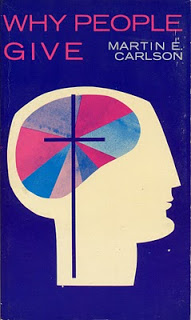A lesson in how to use idea management systems

 We've talked about idea management systems; why to have one; what they should do; what they can do. Today let's talk specifically how people will use them once they are deployed. First off, I'd love to get input from others familiar with idea management systems. Feel free to use the comments section to your heart's content. The great thing about flexible, collaborative systems is that they can be used in so many ways. So consider this just a big first pass at it, not a presumptuous comprehensive overview. Just like your idea management system, the clock is ticking.
We've talked about idea management systems; why to have one; what they should do; what they can do. Today let's talk specifically how people will use them once they are deployed. First off, I'd love to get input from others familiar with idea management systems. Feel free to use the comments section to your heart's content. The great thing about flexible, collaborative systems is that they can be used in so many ways. So consider this just a big first pass at it, not a presumptuous comprehensive overview. Just like your idea management system, the clock is ticking.
Let's think about what an idea management system is'An idea management system is a collaborative tool, somewhat like Facebook, but it's installed internally to an organization and the only thing people are talking about is business. So let's extend the Facebook metaphor further. Like Facebook, you can post things like files, images, articles, videos and links to sites on the internet. There are always members of the team who find (or know) something of value and they can share it via the idea management system. With all this posting of information, a collateral byproduct of the idea management system is that it serves as a Knowledge Management System, as well. When you're researching a topic you can look up information that your team has provided. And, odds are, if something is interesting to others, then it may be interesting to you.If your team has a place to post information (or ideas), then they're likely to be shared and discovered by others. And also like Facebook you can look at people's profiles to learn more about them or to discover what they tweet or what they're interested in or who follows them or who they follow. You can learn more about them by seeing what they post; what ideas they've submitted. You can start or participate in discussions. Perhaps your thought is not 'idea-ready'. You can instead either compose it or save it as a draft until it is ready, or you can just have a sidebar discussion about something with others. These discussions can be fruitful and perhaps a supervising innovation manager can eyeball an interesting discussion (or comment), decide it's 'idea-worthy' and promote it to be an idea. And like Facebook, you can comment on what people post. These comments have real value. They shape the idea. They are a measure of the wisdom of the crowd. And not only the number of comments speaks to the value of any given idea, but the votes on comments add to the ideas perceived value to the crowd assembled to collaborate.
And also like Facebook you can look at people's profiles to learn more about them or to discover what they tweet or what they're interested in or who follows them or who they follow. You can learn more about them by seeing what they post; what ideas they've submitted. You can start or participate in discussions. Perhaps your thought is not 'idea-ready'. You can instead either compose it or save it as a draft until it is ready, or you can just have a sidebar discussion about something with others. These discussions can be fruitful and perhaps a supervising innovation manager can eyeball an interesting discussion (or comment), decide it's 'idea-worthy' and promote it to be an idea. And like Facebook, you can comment on what people post. These comments have real value. They shape the idea. They are a measure of the wisdom of the crowd. And not only the number of comments speaks to the value of any given idea, but the votes on comments add to the ideas perceived value to the crowd assembled to collaborate.
The collaborative idea management system provides a stimulus for people to contribute.
An idea management system provides a place for people to post their ideas. Without this environment, those ideas might just get lost.
Like Facebook, I always picture the users in an organization popping on for a peek for a few minutes every day. Some organizations encourage their people to put aside time to work on special or pet projects and this is an excellent time to get on the collaborative tool for ideation. And because people have posted interesting things and links and biographies, the user community can use the idea management system to look up things of interest; to problem solve; to find an expert to help. So with all this collab oration, an idea management system gets your company a pretty cool thing: Organizational Engagement. But the purpose of the idea management system is, of course, a place to gather ideas. So, if you and your coworker chat about work at lunch and come up with a brainstorm, you can get back to your desk, log into the idea management system and post your (shared) idea. And if you've always thought 'if our company did something differently or faster or slower (or whatever), the company could make or save money', you can post this idea too. Both of these are examples of unsolicited ideas and this is a great place to get incremental improvements. And incremental improvements can deliver quick wins with rapid returns on investment.
oration, an idea management system gets your company a pretty cool thing: Organizational Engagement. But the purpose of the idea management system is, of course, a place to gather ideas. So, if you and your coworker chat about work at lunch and come up with a brainstorm, you can get back to your desk, log into the idea management system and post your (shared) idea. And if you've always thought 'if our company did something differently or faster or slower (or whatever), the company could make or save money', you can post this idea too. Both of these are examples of unsolicited ideas and this is a great place to get incremental improvements. And incremental improvements can deliver quick wins with rapid returns on investment.
The issue with an idea management system is not that you won't get enough ideas. You're likely to get too many. That's where some sort of automated promotion process helps winnow down the list to the very best ideas.
But for breakthrough ideas, you need Strategic Guidance. And the idea management system can provide strategic guidance with the use of Challenges or Seeding. Whate ver the company's management is talking about in the boardroom; whatever they're worrying about at night can be articulated as a challenge to the team. The idea management system can be used to ask for help from the user community: Please give us your ideas. So some examples of this can be: What should our next breakthrough product be? What can we do to improve our chances at the big event we're attending? How do we turn our company more 'green'? These breakthrough ideas are where the really big payoffs reside. They can help your organization compete effectively in this challenging economy. Unlike the structured environments and systems that are so useful for marching projects toward completion, the front end of innovation flourishes by providing a collaborative tool. It is great that it is unstructured (the structure would only inhibit progress at this stage of the game). The Web 2.0 tools brought into the Enterprise serve to provide a disruptive, unpredictable, chaotic milieu that can yield serendipitous yet wonderful results. You should probably think of the idea management system as 'Research' while all the systems that ensue (traditional Project Management, PLM, PPM, etc.) are more like 'Development'. How does your organization use idea management? What's your vision for what an idea management system can do for your team? Ron Shulkin is Vice President of the Americas for CogniStreamer', an innovation management system. You can learn more about CogniStreamer here http://bit.ly/ac3x60 Ron manages The Idea Management Group on LinkedIn (Join Here) http://bit.ly/dvsYWD . He has written extensively on Idea Management (Read Here) http://bit.ly/b2ZEgU . CogniStreamer' is an idea management software tool. It is an open innovation and collaboration platform where internal colleagues and
ver the company's management is talking about in the boardroom; whatever they're worrying about at night can be articulated as a challenge to the team. The idea management system can be used to ask for help from the user community: Please give us your ideas. So some examples of this can be: What should our next breakthrough product be? What can we do to improve our chances at the big event we're attending? How do we turn our company more 'green'? These breakthrough ideas are where the really big payoffs reside. They can help your organization compete effectively in this challenging economy. Unlike the structured environments and systems that are so useful for marching projects toward completion, the front end of innovation flourishes by providing a collaborative tool. It is great that it is unstructured (the structure would only inhibit progress at this stage of the game). The Web 2.0 tools brought into the Enterprise serve to provide a disruptive, unpredictable, chaotic milieu that can yield serendipitous yet wonderful results. You should probably think of the idea management system as 'Research' while all the systems that ensue (traditional Project Management, PLM, PPM, etc.) are more like 'Development'. How does your organization use idea management? What's your vision for what an idea management system can do for your team? Ron Shulkin is Vice President of the Americas for CogniStreamer', an innovation management system. You can learn more about CogniStreamer here http://bit.ly/ac3x60 Ron manages The Idea Management Group on LinkedIn (Join Here) http://bit.ly/dvsYWD . He has written extensively on Idea Management (Read Here) http://bit.ly/b2ZEgU . CogniStreamer' is an idea management software tool. It is an open innovation and collaboration platform where internal colleagues and
external partner companies or knowledge centers join forces to create, develop and assess innovative ideas within strategically selected areas. The CogniStreamer' portal is an ideal collaborative platform that invites users to actively build a strong innovation portfolio. In addition it provides a powerful resource for internal and external knowledge sharing. The CogniStreamer' framework is used by industry leaders such as Atlas Copco, Bekaert, Case New Holland, Cytec, Imec, Picanol and ThyssenKrupp. CogniStreamer' represents the best use of adaptive collaborative technology such to harness human skill, ingenuity and intelligence.